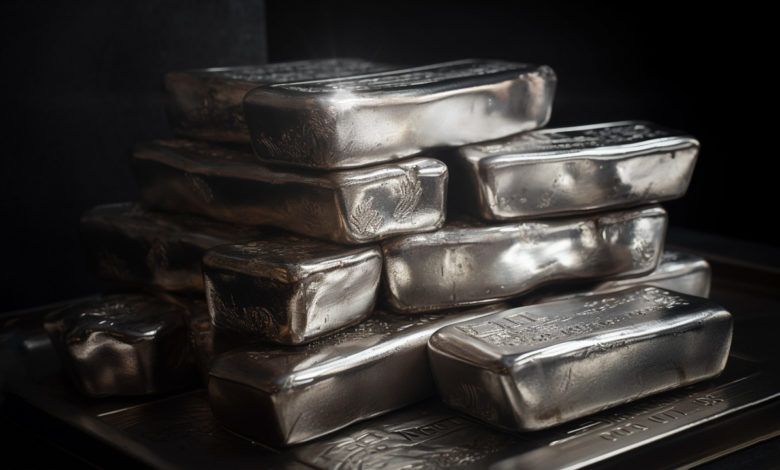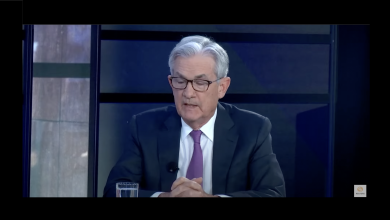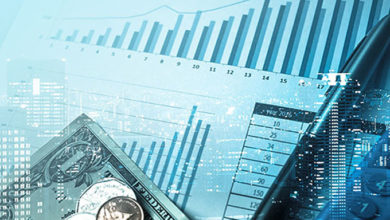Silver Price Inexcusably Low Given the Market Dynamics

Silver is significantly undervalued right now. One analyst called the current price in the $22 an ounce range “inexcusably low.”
But many analysts are bullish on silver in the medium term with projections of prices climbing to $50 to $100 an ounce over the next two to five years.
The question is when will we finally start to see this correction?
Silver has languished in 2023. While gold is up over 4% on the year, the price of silver has declined by over 5%.
We can see the growing spread between silver and gold in the silver-gold ratio, currently running at over 84-1. That means it takes over 84 ounces of silver to buy one ounce of gold. To put the current ratio into perspective, the average in the modern era has been between 40:1 and 50:1.
Historically, the ratio has always returned to that mean. And when it does, it does it with a vengeance. The ratio fell to 30-1 in 2011 and below 20-1 in 1979.
When the spread gets this wide, silver doesn’t just outperform gold, it goes on a massive run in a short period of time. Since January 2000, this has happened four times. As this chart shows, the snapback is swift and strong.
Current Dynamics
Silver has faced the same headwinds as gold with the Federal Reserve pushing interest rates higher to battle price inflation. Fed monetary policy has strengthened the dollar and sticky price inflation has kept investors on edge with expectations of more rate hikes. This has pressured the price of both gold and silver lower.
Silver has faced additional bearish sentiment due to a slowing economy. Sagging demand for consumer electronics has impacted industrial demand for both silver and gold. BMO Capital Markets commodities analyst Colin Hamilton noted that while the global economy has held up better than expected in the face of monetary tightening, “This is almost solely down to resiliency in the services economy while the manufacturing side is clearly feeling the strain.”
This disproportionately impacts silver because industrial demand makes up over 50% of total silver demand, as compared to only ~7% of gold.”
But looking at the longer term, the supply and demand dynamics are bullish for silver. In fact, there is a looming supply shortage.
Analysts believe that the growing demand for silver in the solar power industry will likely put a significant squeeze on supply in the coming years, and the current price of silver does not reflect the likely shortages.
We’re already seeing a tightening silver supply. While silver demand set records in every category in 2022, supply was flat with mine output falling by 0.6%. This resulted in a 237.7 million ounce market deficit in 2022.
It was the second consecutive annual deficit in a row. The Silver Institute called it “possibly the most significant deficit on record.” It also noted that “the combined shortfalls of the previous two years comfortably offset the cumulative surpluses of the last 11 years.”
This trend is not expected to reverse. Silver Bullion Pte Ltd. CEO Gregor Gregersen recently noted that silver mine production has fallen due to a lack of investment.
Production cannot be materially increased over the short term as it can take over 10 years to commence new mining operations. Therefore, increased silver prices will not lead to increased mine production for a long time.”
Meanwhile, we are likely about to see a huge increase in demand for the white metal thanks to the push for green energy.
Due to its outstanding electrical conductivity, silver is an important element in the production of solar panels. It is used to conduct electrical charges out of the solar cell and into the system. Each solar panel only uses a small amount of silver, but with the demand for solar panels growing exponentially every year, those small amounts of silver add up.
According to a research paper by scientists at the University of New South Wales, solar manufacturers will likely require over 20% of the current annual silver supply by 2027. And by 2050, solar panel production will use approximately 85–98% of the current global silver reserves.
Recession worries would typically dampen industrial demand for silver, but the photovoltaic industry and the “green energy” sector more generally are essentially recession-proof due to support from governments around the world. With battling climate change a priority, it is highly unlikely investment in solar power and other green energy technologies will fall, even in the midst of an economic downturn.
And it’s important to keep in mind that while silver is an industrial metal, more fundamentally, it is money. Despite being more volatile in the short term, silver tends to track with gold over time. If you are inclined to think the Federal Reserve will lose the inflation fight, you should be bullish on both gold and silvers.
At some point, investors will have to reckon with the shrinking supply of silver coupled with rising demand, along with the Fed’s inability to bring inflation back to its 2% target. When that happens, the price of silver will likely take off.
Given the supply and demand dynamics, the skewed silver-gold ratio and the likelihood that the Fed will not beat price inflation, $22 silver looks like a great buying opportunity.
Call 1-888-GOLD-160 and speak with a Precious Metals Specialist today!
Buka akaun dagangan patuh syariah anda di Weltrade.
Source link







